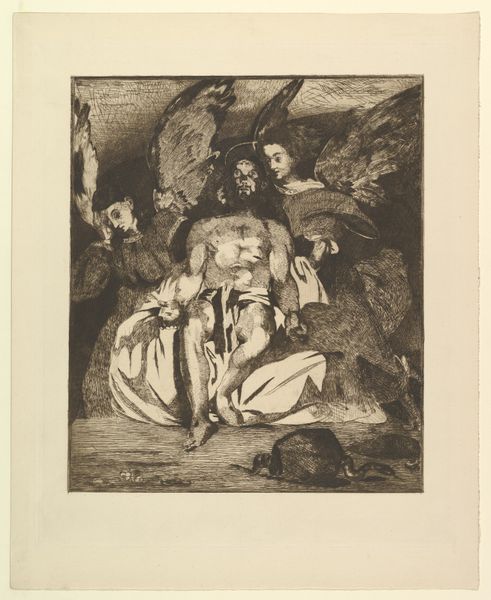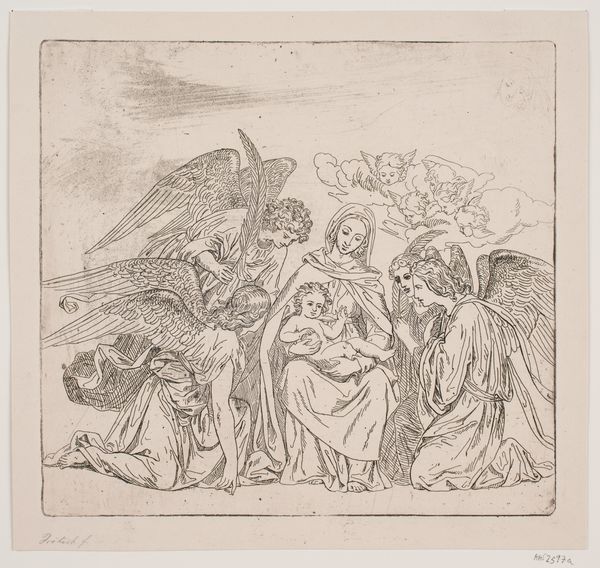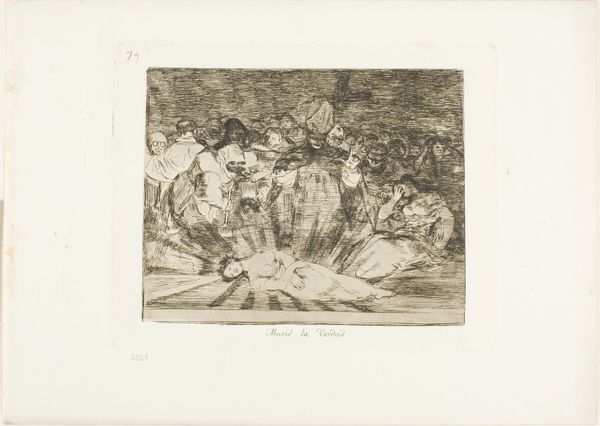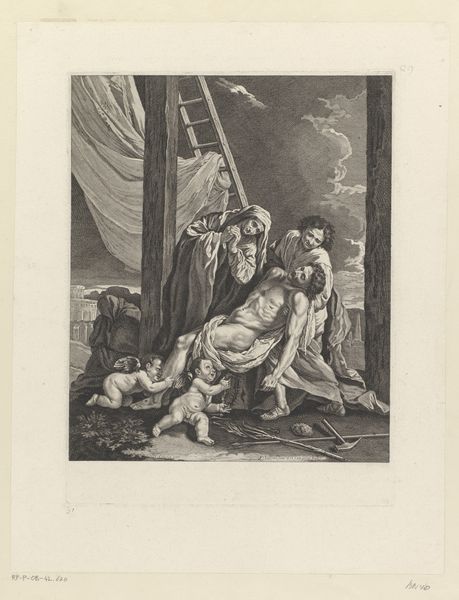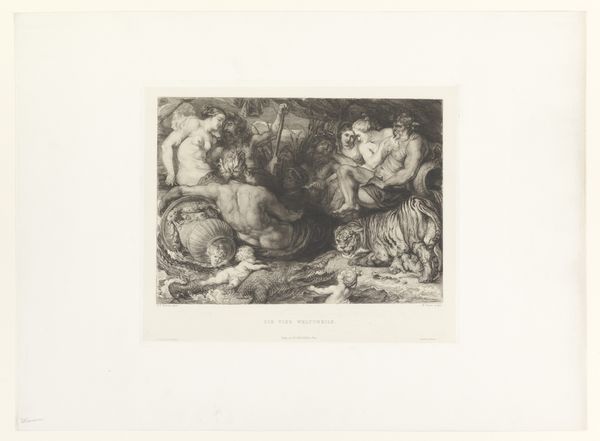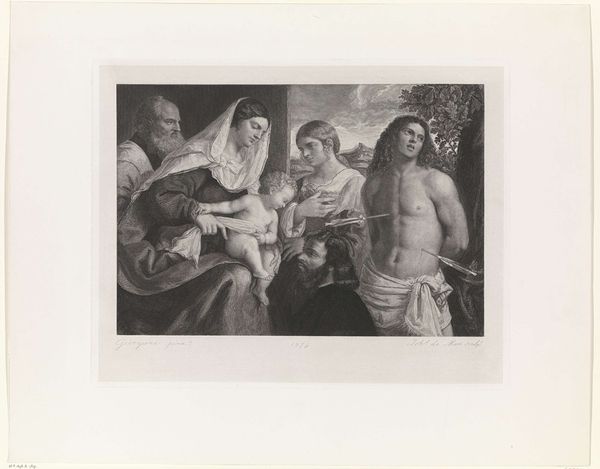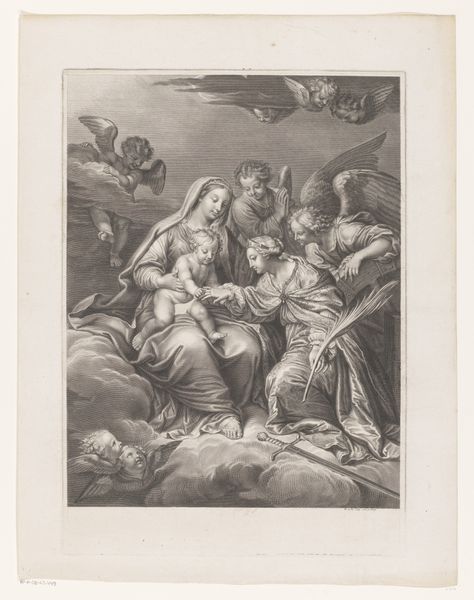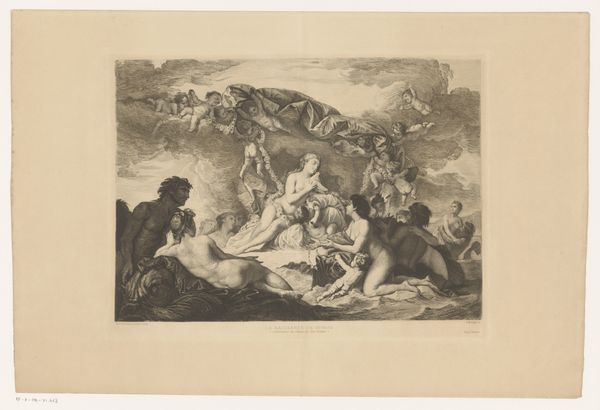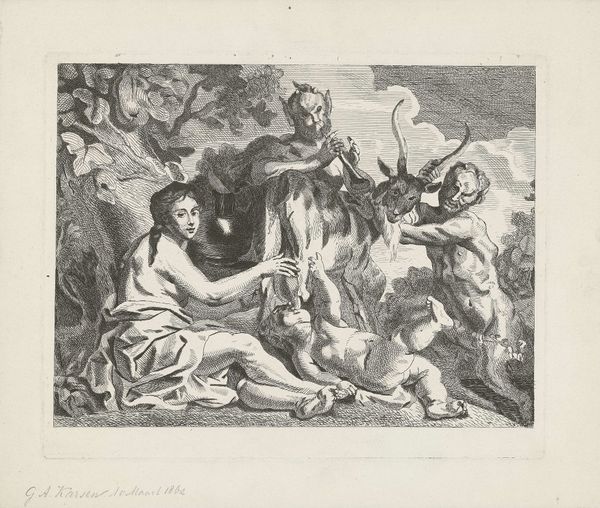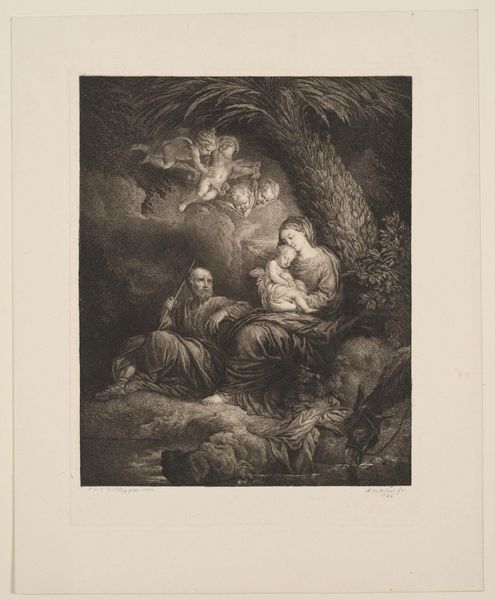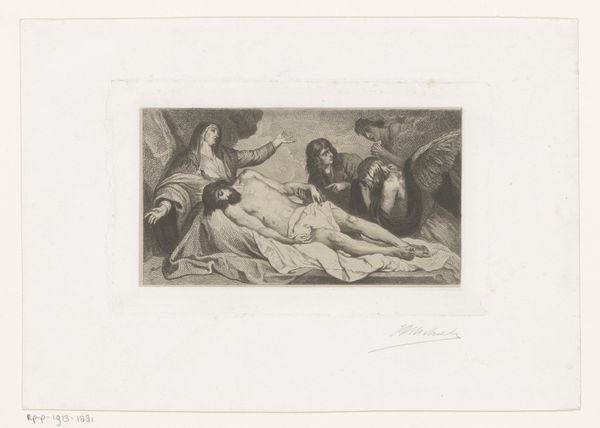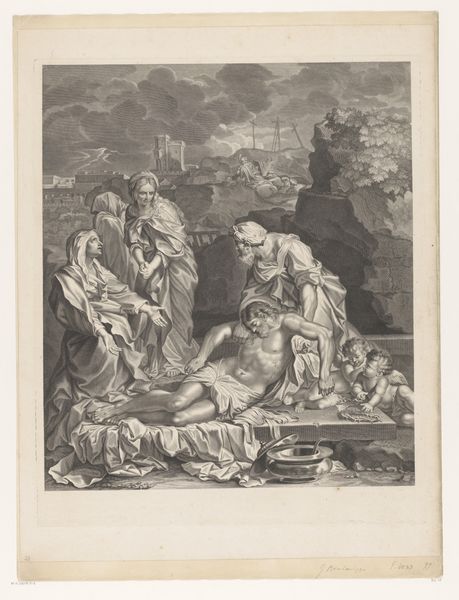
print, engraving
# print
#
figuration
#
history-painting
#
academic-art
#
engraving
#
realism
Dimensions: height 374 mm, width 472 mm
Copyright: Rijks Museum: Open Domain
This print, Deposition of Christ, was made by Johannes de Mare, likely in the mid-19th century, using engraving. Engraving is a painstaking process. The artist uses a tool called a burin to incise lines directly into a metal plate. The depth and density of these lines determine the tones in the final print. The plate is then inked, wiped clean, and pressed onto paper, transferring the image. Consider the labor involved. Each line you see here represents a deliberate, physical act. The image emerges from the accumulation of countless individual marks. De Mare would have needed immense skill and control, to capture the subtleties of light and shadow, and the emotions of the figures. In a way, the work mirrors the very subject it depicts: a body being carefully, lovingly lowered. The act of making, the labor involved, becomes a form of reverence. It reminds us that all images, even those that seem effortlessly beautiful, are the product of skilled hands and dedicated effort.
Comments
No comments
Be the first to comment and join the conversation on the ultimate creative platform.
